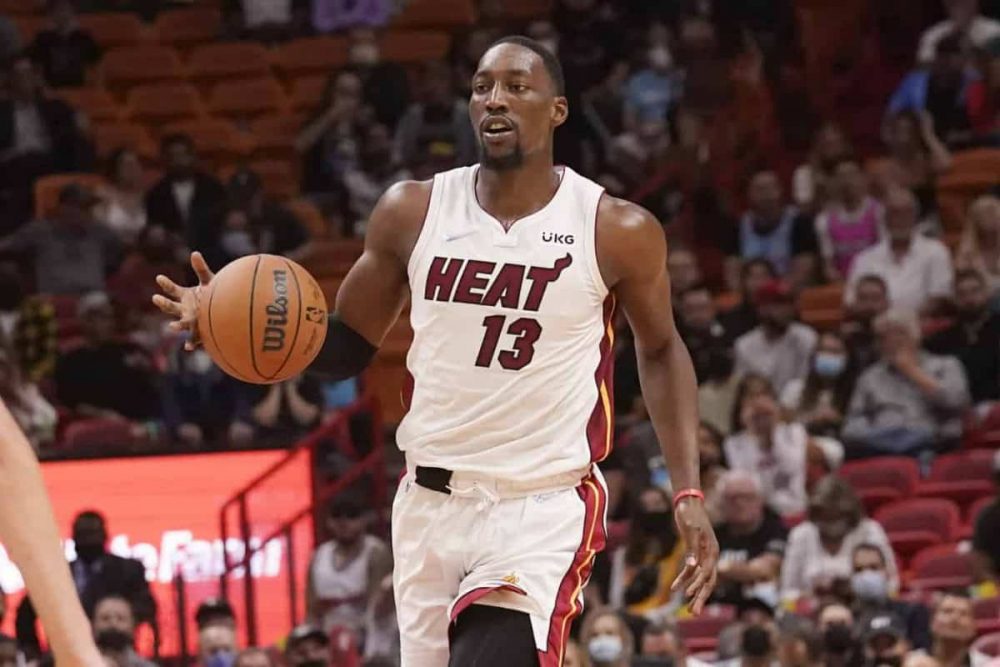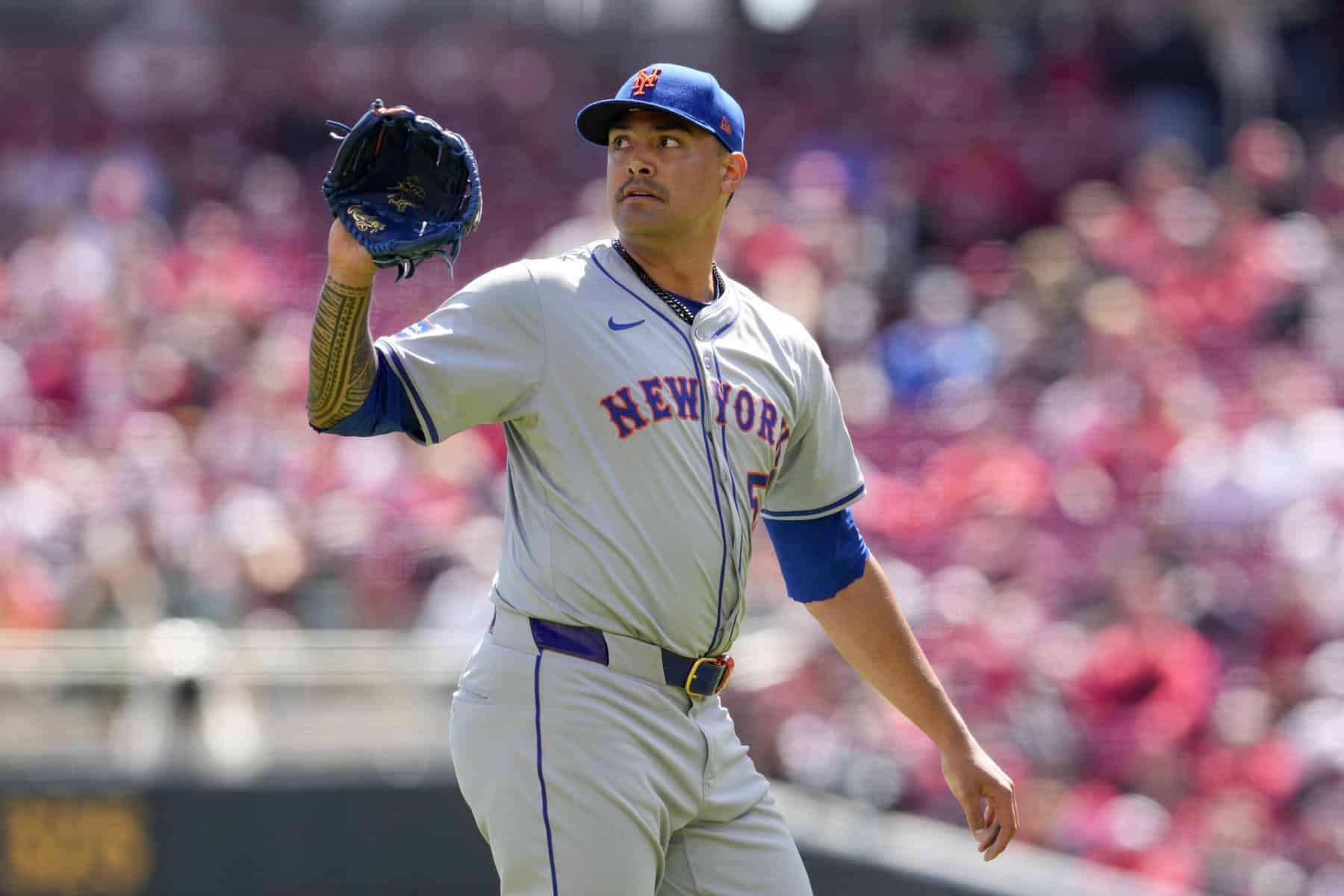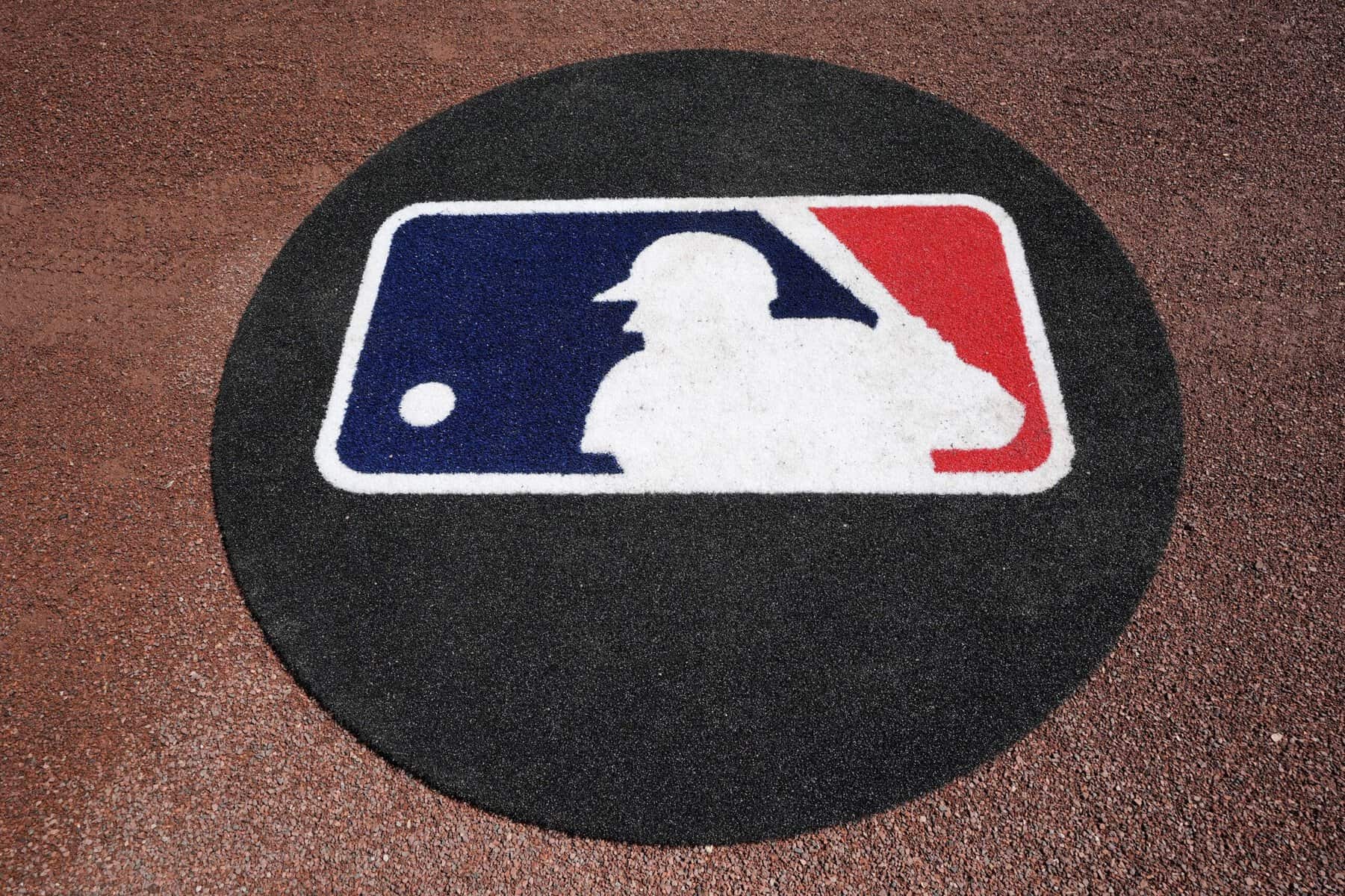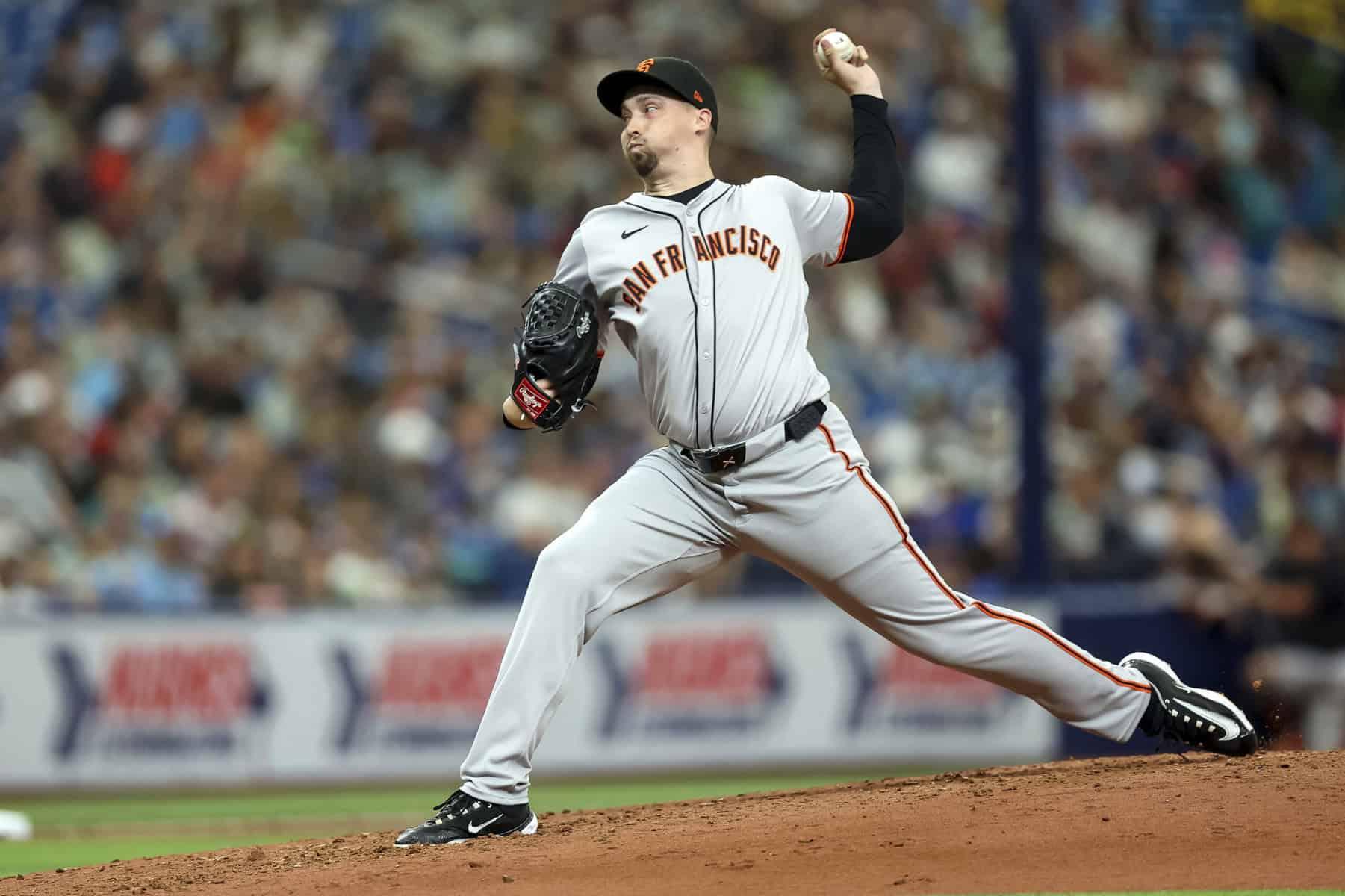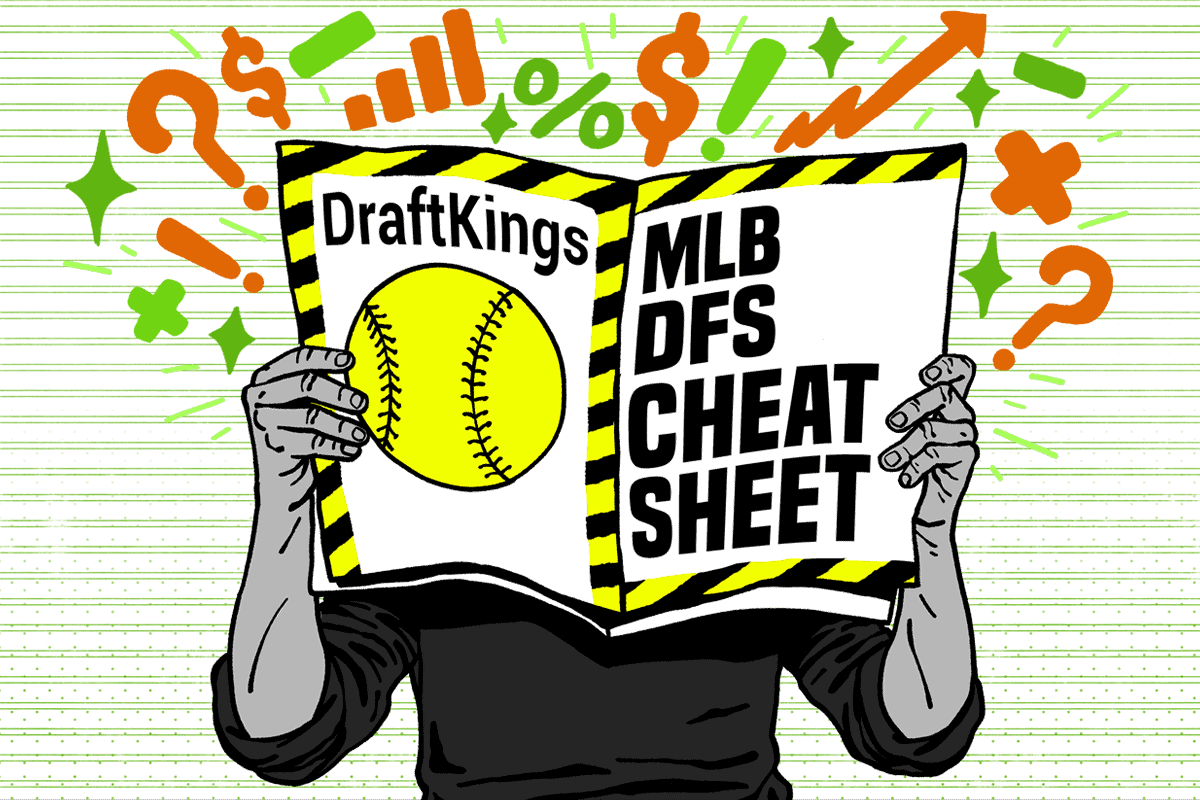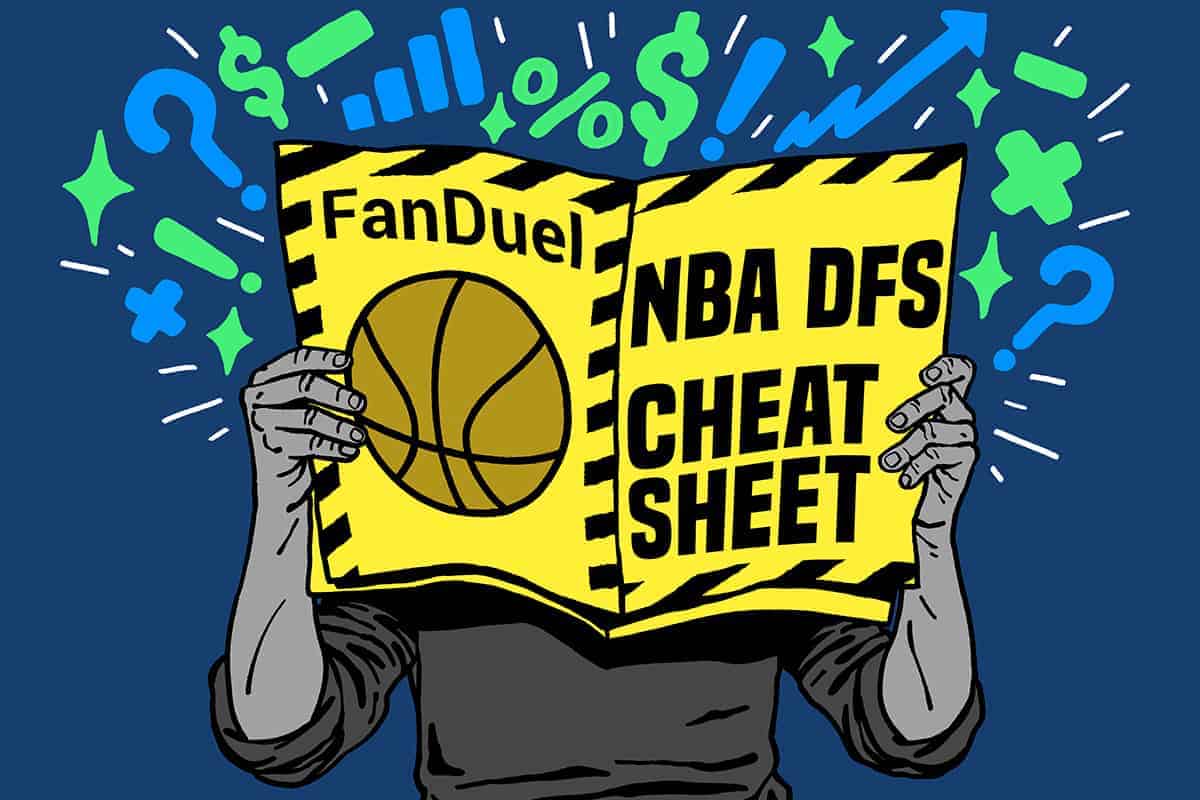Following a rain-delayed, wreck-induced, over-time thrilling, scary, prayer-invoking Daytona 500, NASCAR heads west to Las Vegas for the Pennzoil 400. In seasons past, NASCAR would have made the short jog up to Atlanta. However, the 2020 schedule reformat has NASCAR going to Las Vegas first. Luckily for us, this just means speeding up the first Vegas race by a week. Thus, expectations for racing conditions aren’t evolving much at all. Every week, expect a primer similar to this to help set the stage for your NASCAR DFS research purposes. These previews will address the major points of how fantasy points are being scored and how that breaks down on daily fantasy lineups.
Not a member of Awesemo? No worries, sign up HERE to gain access to the world’s best DFS player’s projections, rankings, tools, and premium live blog. Use promo code WANNAGOFAST for half off your first week!
Las Vegas Motor Speedway
Las Vegas, part of the Speedway Motorsports Inc group, is really four tracks in one. On the outside of the track is the four-wide drag strip utilized by the NHRA. Side note, if you’ve never watched four-wide drag racing, it really is a spectacle to behold. Luckily for our sanity, it appears DraftKings is nowhere near close to offering NHRA DFS.
Inside the confines of the actual speedway sits the 1.5-mile long asphalt, D-shaped oval. Inside this oval are a .375-mile long mini-oval called The Bullring as well as a .5-mile clay-surface oval dirt-track. However, for NASCAR DFS purposes, we’re just worried about the 1.5-mile oval for DraftKings and FanDuel purposes.
Las Vegas falls into the category of an “intermediate track” as it is longer than a mile but shorter than two. Its shape and size put it in the category of tracks like Texas, Kansas, Charlotte and Chicagoland, to name a few. Thus, since we only have the Daytona 500 to reference drivers against in this new season, I recommend using all of the 2019 intermediate track races as a reference point for your research. This research is already done for you in the Momentum tab of the Race Sheets.
Track Trends – Laps Led
Since 2013, the debut of the Gen-Six car, Las Vegas has hosted nine Cup races. The majority of those (seven) have taken place in the late-winter like the Pennzoil 400 is Sunday. Only since 2018 has NASCAR been visiting Las Vegas in the summertime. For the sake of continuity, all track trends referenced will be the Vegas winter races. The drastic change in temperature, as well as the summer event being a playoff race, makes the races too dissimilar for my taste.
What doesn’t change, however, is Vegas always running 400 miles (267 laps). Below is a chart of how many drives per race led at least 10% of the laps (minimum 26) and exactly how many they led in the process. Last week in Daytona, we deemphasized laps led because of the lack thereof (200). This week they become more important for DFS purposes, especially as the propensity for wrecks falls precipitously.
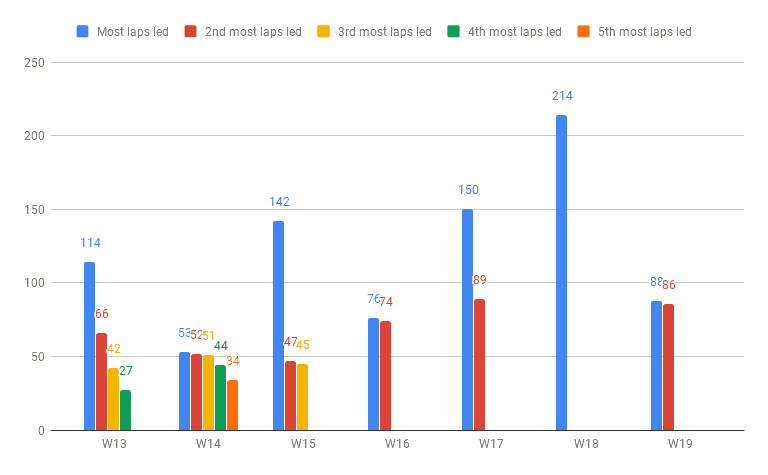
This graph is everywhere. If we turned this into a line graph, this would look more like the 1980’s stock market with the stark rises and falls. The driver who has led the most laps has gone from 114, 53, 142, 76, 150, 214 and then back down to 88 last year.
The trend worth pointing out is what’s happening with the secondary lap leader. In three of the past four Vegas winter races, a second driver has led at least 74 laps. If two drivers are going to continue to gobble up the majority of laps, then it necessarily means lineups will need to be focused around dual lap leaders.
Check us out on TWITTER, where we talk sports, share articles and have lots of giveaways. Just click HERE
Follow the Leader
Perhaps more important than knowing we should see two drivers lead the majority of laps, is knowing where they’re likely to start from. Graphed below is where the top-two lap leaders have started, ended, their place differential and how many “dominator” stats they picked up in the process.
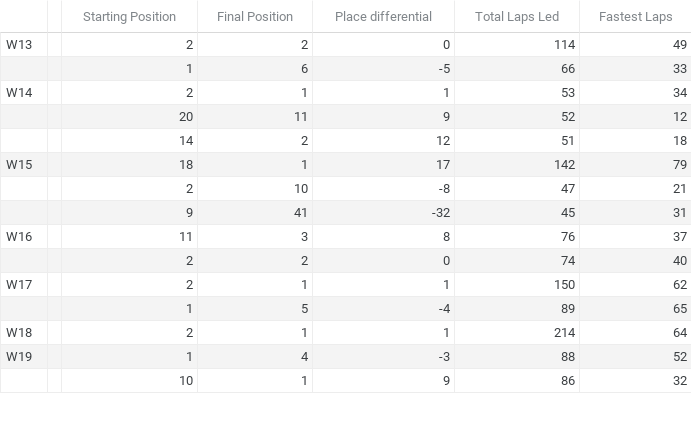
First, let’s address the peculiarities. The 2014 race saw at least five drivers lead 10% or more of the race. The 2015 race saw Kevin Harvick turn in a poor qualifying effort (18th) just to see him lead 142 laps en route to victory. Otherwise, a strong trend pops out above. Lap leaders are coming from the front. More importantly, if a driver sits on the front row the numbers are in his favor. Nine times out of seven races, we’ve seen at least one driver from the front row lead the most or second-most laps.
Oddly enough, it’s the driver starting second who is leading more laps than the pole sitter. In fact, it’s pretty stark. If we just isolate the past three winter Vegas races, the pole sitter is leading 59.3 laps on average compared to 121.3 laps for the driver starting second. This is manifesting into a 20 point DraftKings point differential (92.67 – 72) on average. The differential falls to just nine points on FanDuel, though. Remember, as the laps increase so does the need for rostering lap leaders.
2017 Las Vegas Optimal NASCAR DFS Build
The above drumbeat should culminate in a fairly simple lineup build: two dominators plus a combination of drivers who earn place 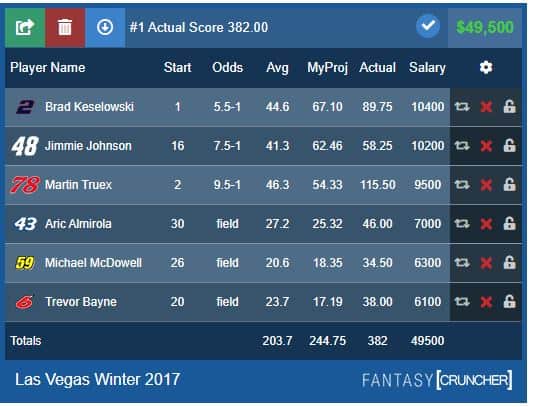 differential as well as finishing position points. If you followed this path in 2017, you may have landed on something similar to the optimal on the left. Martin Truex Jr. led 150 laps from the second position with 62 fastest laps, earning 115.5 DraftKings points. Meanwhile, pole sitter Brad Keselowski led 89 laps with 65 fastest laps, earning himself 89.75 DraftKings points.
differential as well as finishing position points. If you followed this path in 2017, you may have landed on something similar to the optimal on the left. Martin Truex Jr. led 150 laps from the second position with 62 fastest laps, earning 115.5 DraftKings points. Meanwhile, pole sitter Brad Keselowski led 89 laps with 65 fastest laps, earning himself 89.75 DraftKings points.
The front row combined to lead 239 laps, not leaving many laps-led points for the field. Thus, the rest of your roster had to be filled out by drivers earning points via place differential and finishing position. Something to note, the place differential earned this weekend will not be as drastic as Daytona. If a driver starting 16th or beyond can earn 10 spots or more, it’s a win. Furthermore, punt plays rarely make it out of the 20s, much less the 30s. Outside of Daytona or Talladega, the lack of funding becomes apparent for these drivers we consider punt plays.
While we don’t have FanDuel data for this race — FanDuel DFS wasn’t a thing until March of 2018 — the above lineup would look similar.
The Qualifying Fly in the NASCAR DFS Ointment
We fast forward through 2018 as Kevin Harvick led 214 laps and march into last winter’s race.
With 2019 came the first race utilizing the 550 horsepower package. After watching practice and qualifying, the majority of us thought we were about to see something close to a superspeedway race. However, in the end, it was just a normal intermediate race with zero cautions. On green-flag starts, there was a bit of shuffling but not the myriad of slingshots we thought we could see.
Furthermore, the new package emphasized the importance of clean air and being out front. Supposedly, the leader couldn’t escape from the field. However, by the end of the first segment, leader Harvick had a three-second lead on second-place Kyle Busch.
Regardless, this is all moot when you look at the optimal lineup for this race. Because of some stupid games played during qualifying, 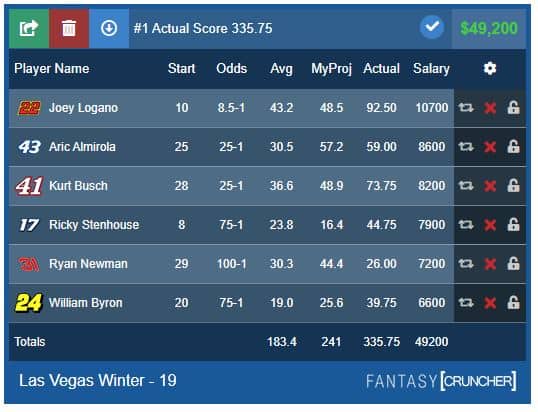 a few drivers started in the 20s. These drivers ended up with top-10 finishes. So what happens when a driver that costs $12,500 scores 85 DraftKings points. returning 6.8 times value, but two drivers that cost nearly $4,000 less both return higher fantasy-point-per-dollar values? Well, it necessarily makes the expensive driver expendable. Furthermore, when you don’t have to roster the most expensive driver, you also don’t need punt plays.
a few drivers started in the 20s. These drivers ended up with top-10 finishes. So what happens when a driver that costs $12,500 scores 85 DraftKings points. returning 6.8 times value, but two drivers that cost nearly $4,000 less both return higher fantasy-point-per-dollar values? Well, it necessarily makes the expensive driver expendable. Furthermore, when you don’t have to roster the most expensive driver, you also don’t need punt plays.
Say Harvick had not lost the lead off pit road. That lineup on the left probably looks different. Heck, don’t give both Aric Almirola and Kurt Busch 20-plus place differential points and the optimal is for sure different. In fact, I can comfortably say, pre-qualifying, that the optimal will return to normalcy. We no longer have group qualifying, outside of road courses, so outside of mass-tech inspection failures, the running order should look like a typical race. Thus, I don’t think you need to change NASCAR DFS expectations based on what you see on the left.
Good luck everyone and be sure to check back later for my Pennzoil 400 NASCAR DFS Picks article for DraftKings and FanDuel once practice is completed.
Looking for more NASCAR DFS picks content? We’ve got loads of articles, data, cheatsheets and more on the Awesemo NASCAR home page, just click HERE

